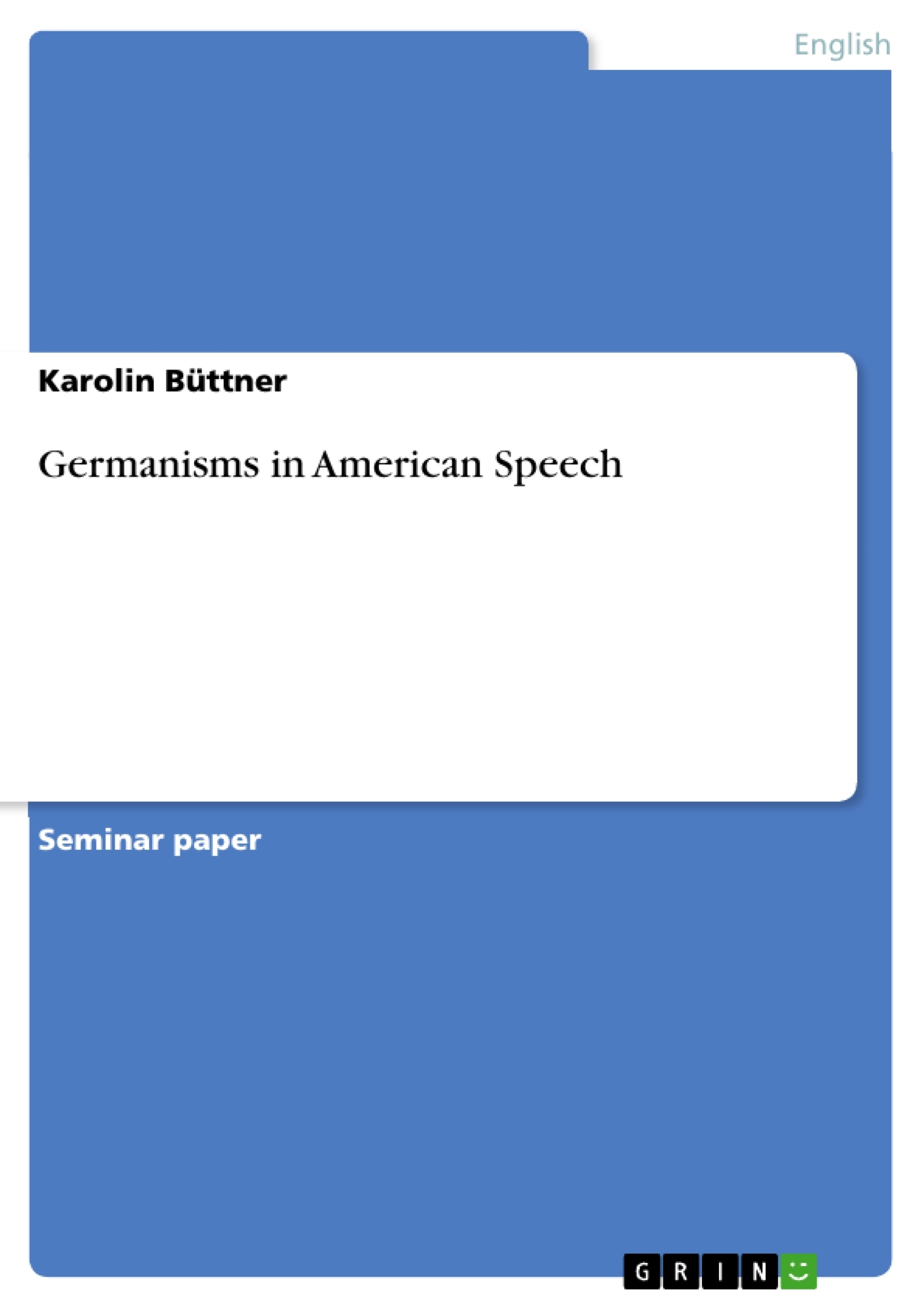In past years, many studies have been published concerning the influence of English, especially
of American English, on the German language. Many people complain about the
hotchpotch of English and German used by present-day youths. They blame the media for
the destruction of the German language. This even led to the founding of an association,
der Verein Deutsche Sprache, to protect the German language. However, few people seem
to be aware that German has made a sizeable contribution to the American English vocabulary
too, even though this is not as large as the contribution of English to the German language.
As will be shown in this paper, words denoting foods, drinks, amusements, skiing
activities, German inventions and parts of the education system were borrowed by the native
population. Borrowing from German started with the early colonial settlers in the 17th
century, settling in Pennsylvania and evolving the Pennsylvanian German which is not of
interest in this paper as it is completely different from the usage of German words of an
average American, and has continued to the present time.
This paper deals with Germanisms in American speech and is intended to give an
overview of the concept of borrowing. Firstly, the processes of borrowing with its examples
of distant and intimate borrowing are traced. Stanforth’s monograph Deutsche Einflüsse
auf den englischen Wortschatz in Geschichte und Gegenwart serves as the basis. Afterwards,
in accordance to Haugen, his categorisation of the loan material into importation,
substitution, partial-substitution and their subdivisions loan words, loan meanings, loan
coinages, loan blends and loan compounds are represented with examples. The following
paragraphs elaborate on the naturalization of the loan material. It is shown that the typographic
representation of words, the orthography, the pronunciation and the grammar can
give information on the state of naturalization. Furthermore, the loan material can change
its part of speech or meaning after having been borrowed. In the fourth main paragraph the
reasons for the large amount of Germanisms, such as the lack of American English equivalents
or the striving for profit and prestige, are explained in detail.
[...]
Inhaltsverzeichnis (Table of Contents)
- Introduction
- The Process of Borrowing and its Different Categories
- The Naturalization of the Loan Material
- Reasons for Germanisms in American Speech
- Presentation and Evaluation of the Research Project
Zielsetzung und Themenschwerpunkte (Objectives and Key Themes)
This paper explores the presence of Germanisms in American speech and aims to provide an overview of the concept of borrowing. The main focus is on the processes of borrowing, the naturalization of loan material, and the reasons behind the prevalence of Germanisms in American English.- The Process of Borrowing: Distinguishing between intimate and distant borrowing, examining examples of borrowing in American English.
- Naturalization of Loan Material: Analyzing how borrowed words adapt to the target language in terms of spelling, pronunciation, and grammar.
- Reasons for Germanisms: Identifying the factors contributing to the presence of Germanisms in American English, such as the lack of American English equivalents or the pursuit of profit and prestige.
- Survey on Germanisms: Presenting and analyzing the findings of a survey conducted on Germanisms in American speech, highlighting common German semantic categories used and their perception by native speakers.
Zusammenfassung der Kapitel (Chapter Summaries)
- Introduction: This chapter introduces the topic of Germanisms in American speech, highlighting the significance of studying the influence of German on American English. It also provides a brief overview of the paper's scope and structure.
- The Process of Borrowing and its Different Categories: This chapter defines the concept of borrowing and delves into its different categories, examining the distinction between intimate and distant borrowing and how these processes occur in American English. The chapter also discusses Haugen's categorization of loan material, including loan words, loan meanings, loan coinages, and loan blends.
Schlüsselwörter (Keywords)
This paper focuses on Germanisms, borrowing, loan words, naturalization, American English, intimate and distant borrowing, loan meanings, loan coinages, loan blends, and the influence of German on the English language.- Citation du texte
- Karolin Büttner (Auteur), 2008, Germanisms in American Speech, Munich, GRIN Verlag, https://www.grin.com/document/115859



